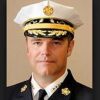Editor’s note: Chief Adam K. Thiel says he’s hit 100 mph en route, but will never do it again as he urges us to consider what impact response-time expectations and available resources have on excessive speed.
Performance measurement, turnout time, time-temperature curves, the “golden hour,” response times, strategic planning targets — in the fire and emergency services we’re constantly surrounded with reminders of the “need for speed,” as a famous actor once uttered in the iconic movie “Top Gun” (where the real stars — U.S. Navy fighter jets — routinely exceeded 100 mph).
So are we really surprised when fire department members drive fast?
I once worked in a department that handed out so-called “CAD tickets” when your response time exceeded a set goal. You had to explain why it took you so long to reach the scene of an emergency, which, given this particular jurisdiction’s legendary traffic, could take awhile even on a good day. Guess what type of driving behavior this practice not-so-subtly encouraged?
How fast is too fast? How slow is too slow?
As this story demonstrates, these can be difficult questions to answer. We know that when our residents call 911 for the fire department they generally don’t want to schedule an appointment for later that day; they want us right now, or even better, five minutes ago.
Have you ever rolled up on a fire-EMS incident, called it in, and waited for help to arrive? I have, and it gave me a renewed sense of empathy for those we serve.
The fact is, response times are ultimately related to broader public policy decisions about fire station locations, resource deployment and unit availability. All other things equal, if you want to reduce or sustain response times in your community, then add more stations, response units or both. It really is that simple, in theory at least.
Otherwise, firefighters at all levels will do whatever they can, including driving fast, to close the gap between available resources and response-time expectations (official or otherwise); this will likely occur regardless of policies, procedures or sanctions.
Now I’m not saying that excessive speeding is OK, because we all know better. The challenge is defining what constitutes “excessive” for any given place, time, road, traffic and weather condition. Frankly, I’ve responded to calls when driving 25 mph, or even 10 mph, was probably excessive due to road, traffic, or weather conditions in that location.
In my 20-plus years of fire and emergency services work have I ever driven more than 100 mph? Yes. Would I do it again? No.
While I consider myself an excellent driver, I’m probably not that good. But then, in my current role there’s generally nobody waiting on me to make a critical tactical decision, take command, or go inside. On those now-rare occasions when I am actually needed on scene, I drive as fast as I can safely go. (I still stop at all the stop signs and red lights.)
Whatever your department’s policy, and practice, is for emergency vehicle operations, this is an important discussion to have with your peers, leadership, and ultimately your community.
Drive safe!


